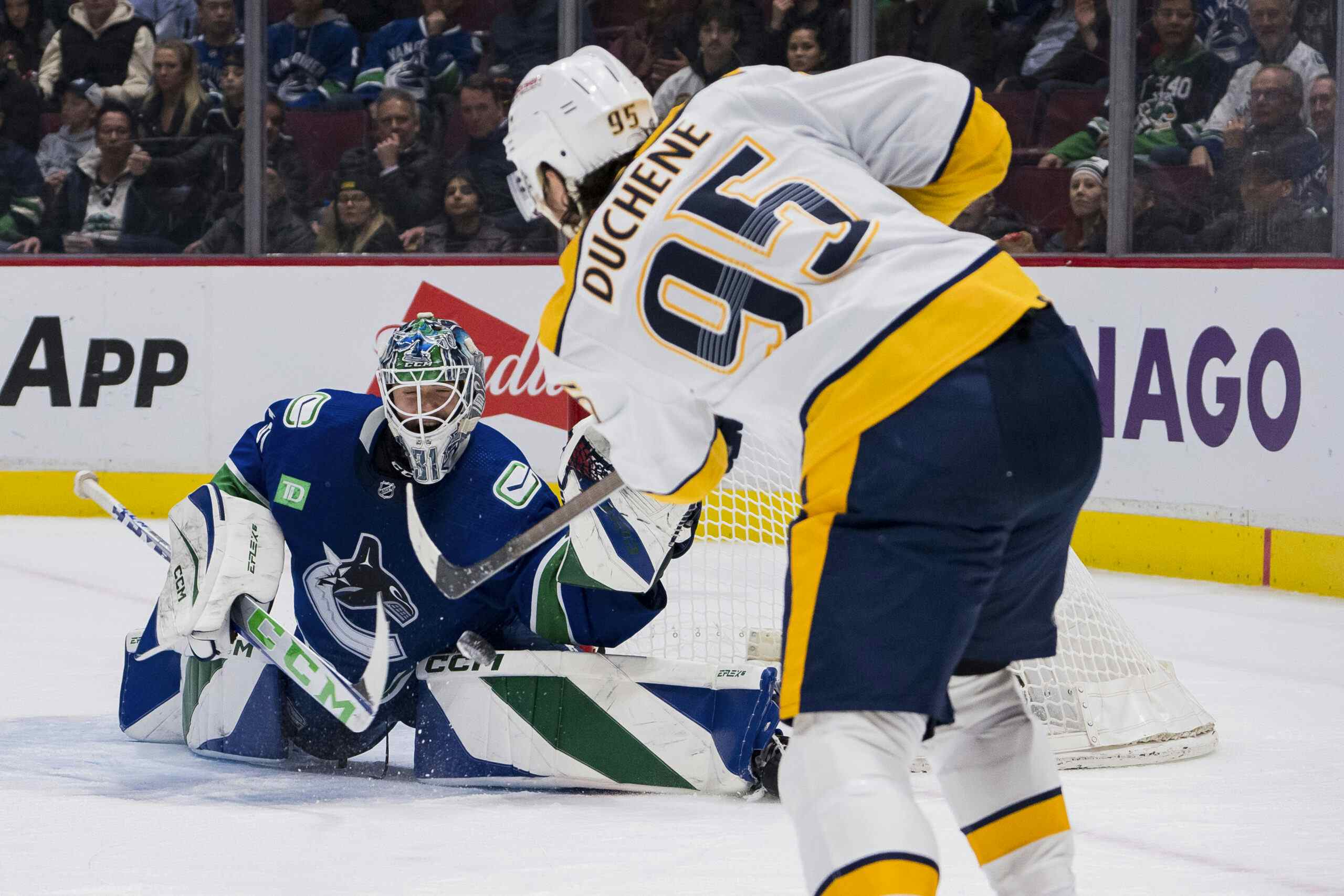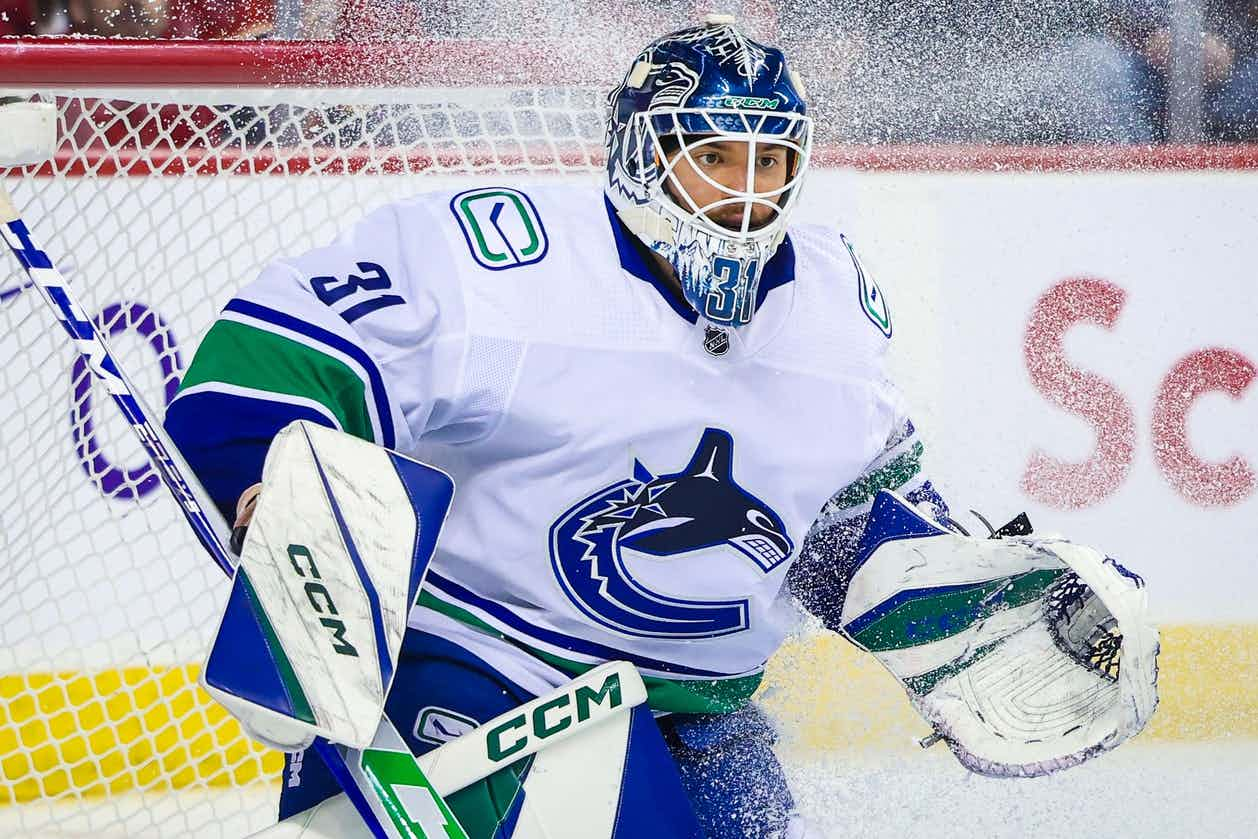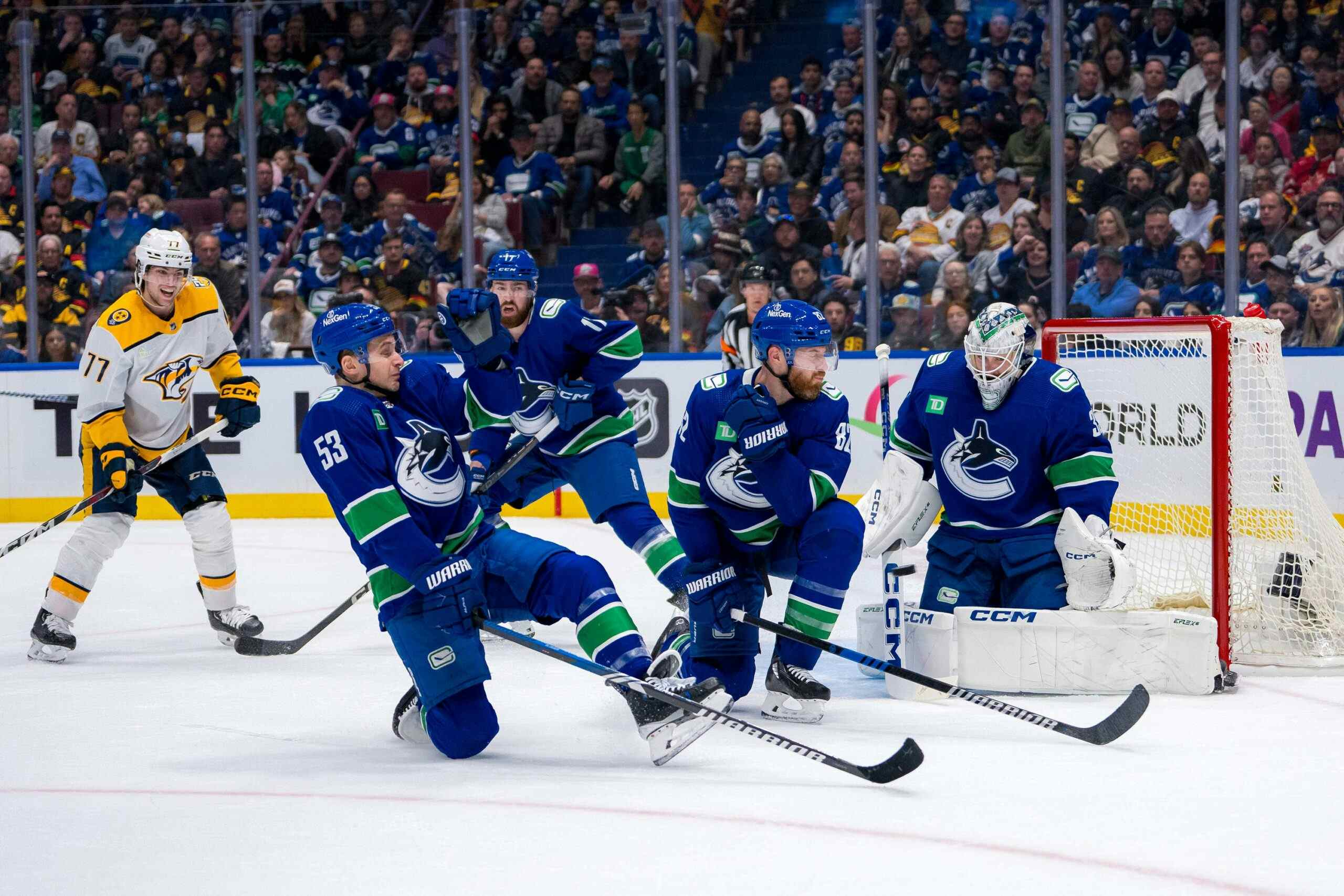How the Canucks were built: 1970

Going into the 1970 expansion draft, the Canucks were certain of one thing: they were going to be a hard-working team. They had three years of evidence in front of them to gauge what it took to be a successful expansion team, but placed in a very tough division and with draft rules stacked against them, the challenge to ice a winning team was huge.
What they were to be was an aggressive, hustling team, with flashes of skill here and there. Even after the draft the team’s general manager, Bud Poile, acknowledged the challenge ahead, telling the Sun after the draft, ‘we may not win many games but we’ll win a lot of fights.’
And he would be right. When it came to building the team first version of the NHL Canucks, Poile and his staff never stood a chance.
Fresh off of learning what it was like to accept a system that was designed to benefit the Canadiens – as argued over the last month by Lowetide – the GMs of the dozen extant teams made sure that the new teams would have little to gain from them. The rules allowed each team to protect two goalies and 15 skaters. In addition, amateur players born after December 31st, 1948 and ‘first-year’ pros were ineligible to be drafted. What this left was a pile of lesser veterans and failed prospects for the Canucks and the Sabres to pick over.

In anticipation of having such slim pickings to choose from, the Canucks went with a strategy used by several of the ’67 expansion teams – buying their own minor league team, stockpiling and developing youthful players who would pay quick dividends when the NHL doors opened. The Rochester Americans, despite having lost several key players to the 1967 expansion, remained a strong team in the American Hockey League and were a prime target for a NHL team to mine for talent. Canucks ownership bought the team and transferred their players to the west coast to play for the Western (professional) Hockey League Canucks for the 1968-69 season.
The idea was that Rochester would be the farm team for, first , the WHL Canucks and then would remain the farm team when the Canucks made the leap to the NHL. The players who made the move to the WHL would be given what amounted to a two-year tryout for the NHL team. Evidently the players rose to the challenge: the Canucks won the 1969 and 1970 WHL playoffs.
But little of this success would transfer to the NHL Canucks, though. Just two players, wingers Murray Hall and Ted Taylor would go on to be regulars in the 1970-71 season and George Gardner was in the netminder triumvirate. Defencemen like John Arbour and Howie Young broke camp with the NHL Canucks but would be moved out during the winter. 35-year-old Marc Reaume got into 27 games before his career was ended by a January 1971 car accident. A few others got cups of coffee, but the bulk of the team was built by the expansion draft.
| Round + Team | Games for Canucks | |
|---|---|---|
| Gary Doak | 1st Bruins | 82 |
| Orland Kurtenbach | 2nd Rangers | 229 |
| Ray Cullen | 3rd North Stars | 70 |
| Pat Quinn | 4th Leafs | 133 |
| Rosaire Paiement | 5th Flyers | 147 |
| Darryl Sly | 6th North Stars | 31 |
| Jim Wiste | 7th Hawks | 23 |
| Dan Johnson | 8th Leafs | 77 |
| Barry Wilkins | 9th Bruins | 256 |
| Ralph Stewart* | 10th Blues | 3 |
| Mike Corrigan | 11th Kings | 95 |
| Wayne Maki | 12th Blues | 180 |
| Ed Hatoum | 13th Wings | 26 |
| Poul Popiel | 14th Wings | 116 |
| John Schella | 16th Habs | 115 |
| Bob Dillabough | 17th Seals | 0 |
| Garth Rizzuto | 18th Hawks | 37 |
| Dunc Wilson* | 19th Flyers | 131 |
| Charlie Hodge | 20th Seals | 35 |
A workmanlike squad, the Canucks found themselves a bevy of hard-working grinders and a few middling scorers. It was a reasonable design to come into a league that had seen similarly-constructed teams, like the Blues and Flyers, find success. It was a compete-now and work on developing youngsters for later approach.

The catch was being placed in the NHL’s still very tough Eastern Division with the likes of Montreal, Boston and New York. If one thing was going to undercut efforts towards quick success, it was going to be playing against long-standing, quality hockey operations.
Scoring goals wasn’t much of a problem – the Canucks finished middle-of-the-pack in goals for – but keeping the puck out of the net proved to be immensely difficult, as the Blue and Green conceded the 3rd-most in the league. They were also combative, leading the league in penalty minutes. That they would be a tough team was well-advertised, but leaving themselves open to penalties can’t have helped their defensive efforts. Playing from behind never works.
The trade for Andre Boudrias was the best move made to build the team. Trading a couple late-round 1970 draft picks to Minnesota, the Canucks got the man who would be their leading scorer for four of their first five seasons. The other non-expansion draft move that contributed positively to the first team was drafting Dale Tallon. He wasn’t Gilbert Perreault and his enthusiasm for hockey would prove to be muddled, but he was a talented player who contributed right away.

On the whole, it was a mixed bag of results from management. Tough rules in setting up the team, combined with a probable over-emphasis on toughness and an extra-tough schedule meant a playoff spot would always be a big mountain to climb in the first season.
One last thing. In setting up the expansion and entry drafts, the NHL, rather famously, used a randomized wheel to determine who would get first pick in each draft. But according to Hal Sigurdson, the Sun’s hockey writer of the day, Buffalo GM Punch Imlach had made an interesting proposition in the days leading up to the wheel spin – instead of separate spins for each draft, there should be just one spin, with the winner getting first pick in the expansion draft but second pick in the entry draft. It seems Bud Poile was too tempted by the chance to win the spin twice that he turned Imlach down. So would Poile have picked Perreault? We’ll never know…
Recent articles from Patrick Johnston





